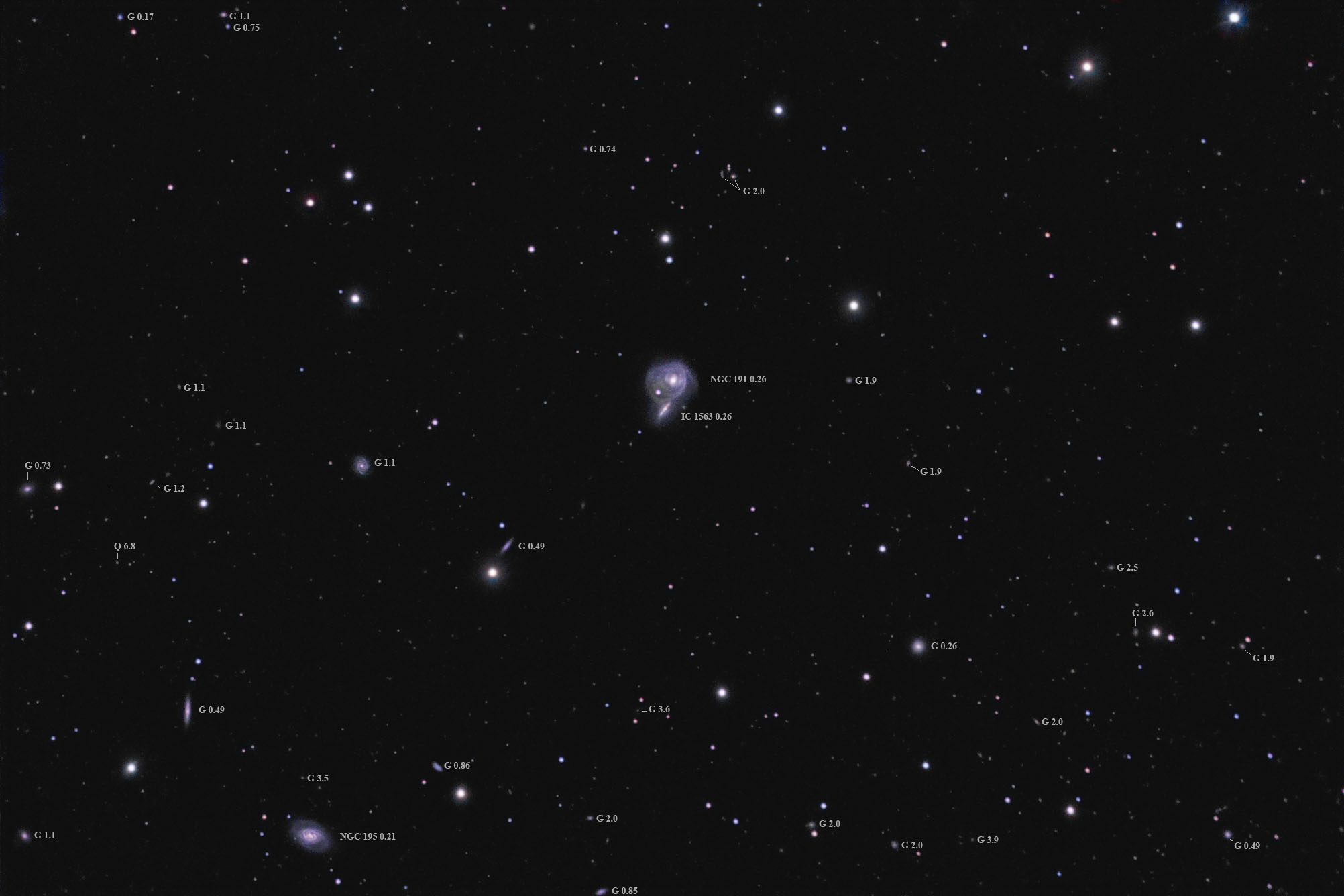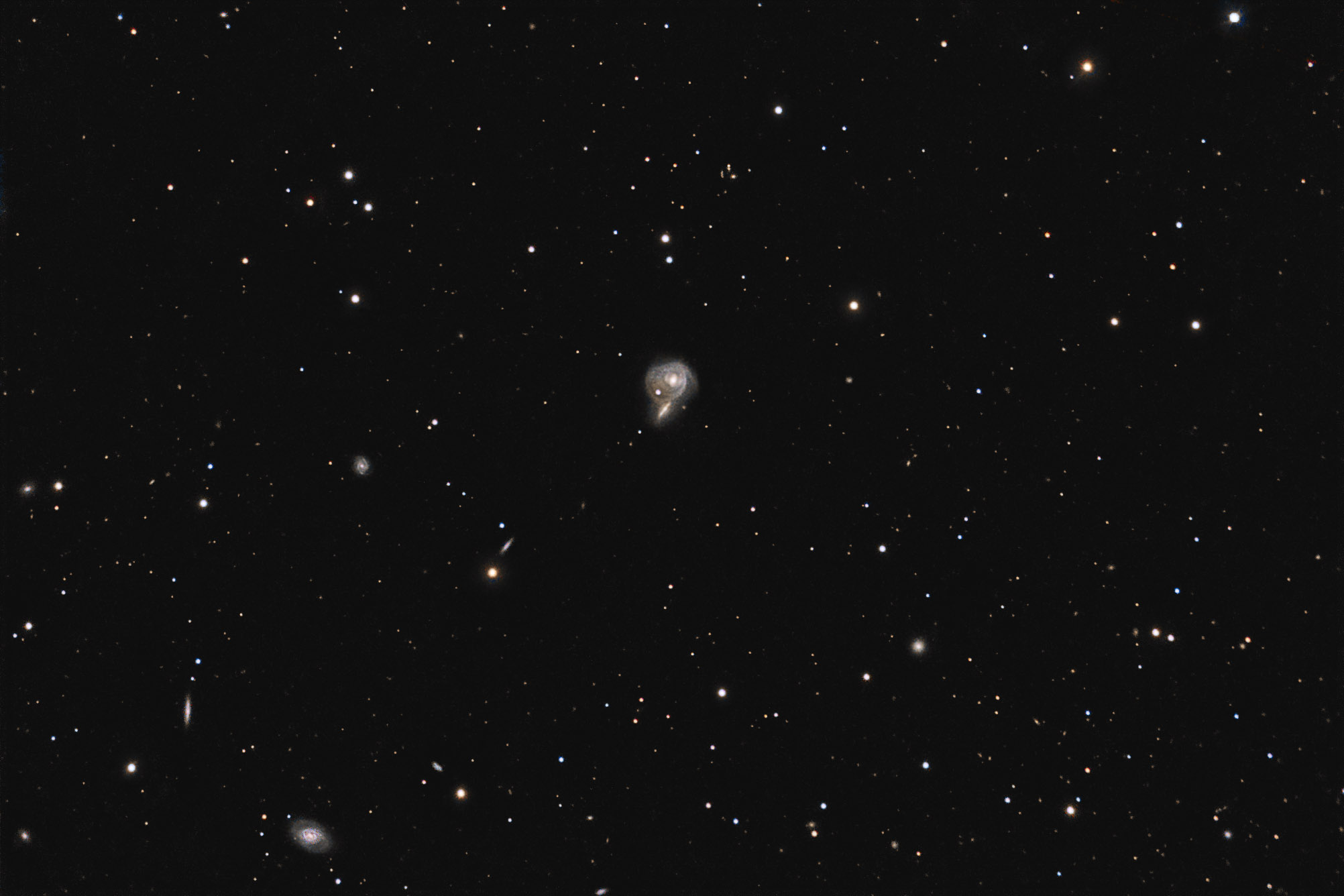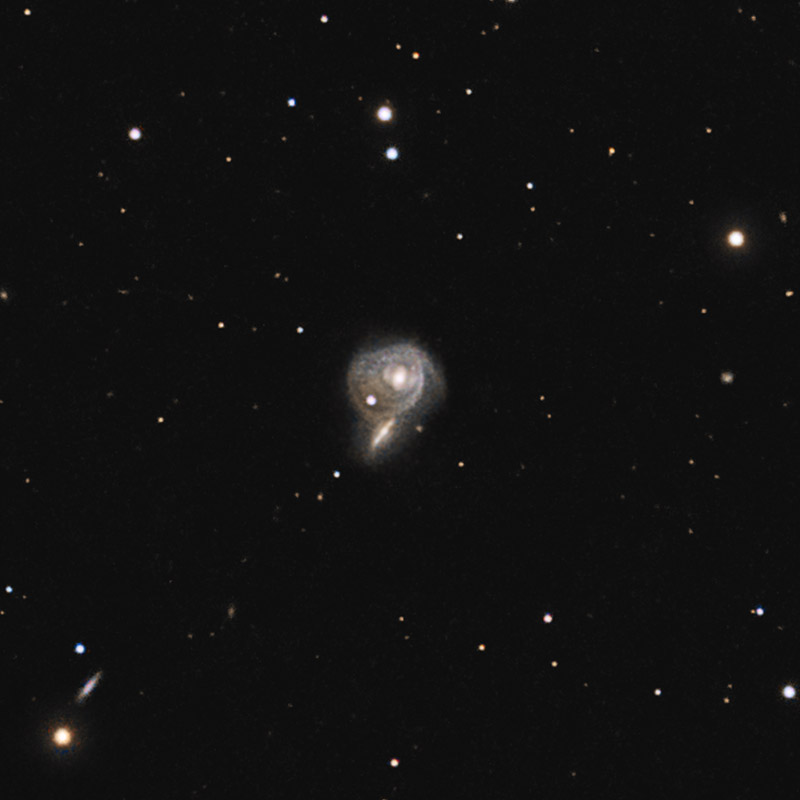| Description | Images |
Object name: ARP127Designation(s): ARP127, NGC0191, IC1563, NGC0195, Arp 127 consists of two interacting galaxies, NGC 191 and IC 1563. Oddly it falls under Arp's category of Elliptical and Elliptical-like Galaxies: Close to and perturbing spirals. NGC 191, the big one, is classed as SAB(rs)c? pec while IC 1563 is S0 pec sp. In my image, it looks more like an edge on Sa galaxy with a well-formed disk and spherical core though there is only a hint of a dust lane. It is surrounded by a bright halo of likely tidally displaced stars. My processing has cut through these to the galaxy "hidden" inside this halo as has the Sloan image I've linked to below. In any case, I find it hard to consider either elliptical-like. Both seem perturbed to me. The pair is about 260 million light-years away in the constellation of Pisces just west of the rich Abell 85 galaxy cluster. Related Designation(s):2MASS J00385944-0900094, 2MASS J00390023-0900524, 2MASS J00393579-0911401, 2MASX J00385944-0900099, 2MASX J00393578-0911400, ABELL 0085:[CZ2003]A1294[005] , ABELL 0085:[CZ2003]A1294[030] , ABELL 0085:[CZ2003]B1294[044] , ABELL 0085:[DFL98] 018, ABELL 0085:[DFL98] 034, ABELL 0085:[SDG98] 0500, ABELL 0085:[SDG98] 0749, APMUKS(BJ) B003627.78-091650.7, ARP 127, ARP 127 NED01, ARP 127 NED02, ARP127, ASK 127198.0, ASK 127271.0, FBQS J0039-0911, FIRST J003935.8-091139, GALEXASC J003935.80-091138.5 , GALEXMSC J003935.80-091141.7 , GSC 5269 00702, GSC 5269 00765, GSC 5269 01623, HOLM 013, HOLM 013A, HOLM 013B, IC 1563, IC1563, IRAS 00370-0928, IRAS F00370-0927, MCG -02-02-076, MCG -02-02-077, MCG -02-02-079, Mr18:[BFW2006] 02657 NED04, Mr18:[BFW2006] 02657 NED05, Mr19:[BFW2006] 05281 NED03, Mr19:[BFW2006] 05281 NED04, Mr20:[BFW2006] 09432 NED02, Mr20:[BFW2006] 09432 NED03, NGC 0191, NGC 0191A, NGC 0195, NGC0191, NGC0195, NPM1G -09.0025, NSA 022131, NSA 022149, NSA 127376, NVSS J003935-091145, PGC 002331, PGC 002332, PGC 002391, SDSS J003859.43-090009.3, SDSS J003900.23-090052.4, SDSS J003900.24-090052.4, SDSS J003900.24-090052.5, SDSS J003935.78-091140.2, SDSS J003935.79-091140.3, USGC S022 NED02, USGC S022 NED03, [BFW2006] J009.74765-09.00260 , [BFW2006] J009.75099-09.01457 , [PJY2015] 587727227305001011 , [SLD2014] 092, | Permanent link: https://images.mantrapskies.com/catalog/ARP-GALAXIES/ARP127-NGC0191-IC1563-NGC0195/ARP127L4X10RGB2X10X3R1-ID.JPG |


